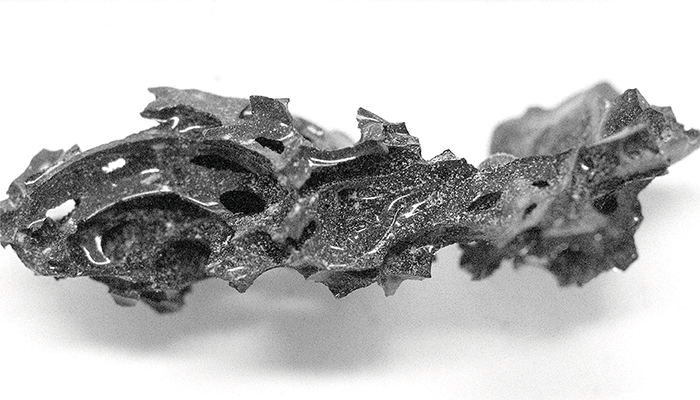
The first known case of a human brain preserved as natural glass formed when the victim of the 79 CE Vesuvius eruption was exposed to extreme heat before rapidly cooling, according to a new study. The researchers used spectroscopic techniques to confirm that the glassy material found inside the skull of an individual from Herculaneum was formed through a process of high-temperature vitrification.
The study, led by Guido Giordano of Roma Tre University, Italy, examined fragments of the material recovered from the skull and spinal cord of a man believed to have been a guardian at the Collegium Augustalium, a public building in Herculaneum. Unlike typical forms of organic preservation, such as mummification or saponification, the remains showed characteristics consistent with vitrification, a process in which material transitions into a glass-like state.
Vesuvius’ Deadly Surge
When Mount Vesuvius erupted in 79 CE, it unleashed one of the most infamous volcanic disasters in history. While Pompeii was buried under thick layers of pumice and ash, Herculaneum – closer to the volcano – faced an even more brutal fate.
The eruption began with a towering column of ash and gas that rose miles into the sky, raining debris over the surrounding region. But it was the pyroclastic surges – blistering clouds of gas, ash, and rock traveling at hurricane speeds – that truly sealed the towns’ doom. Herculaneum was engulfed in waves of superheated gas, reaching temperatures of over 500°C.
The eruption lasted for two days, burying Herculaneum beneath nearly 20 meters of volcanic material. Unlike Pompeii, whose ruins were gradually uncovered, Herculaneum remained so well-preserved that wooden structures and even food items have been found intact.
To investigate the origin of the glassy remains, the researchers conducted a series of analyses, including field emission scanning electron microscopy (FE-SEM), energy-dispersive X-ray spectroscopy (EDS), Raman spectroscopy, and differential scanning calorimetry (DSC). FE-SEM imaging revealed the preservation of complex neural structures, including axons, within the vitrified material. EDS confirmed the primarily carbonaceous composition, with traces of other elements, while Raman spectroscopy indicated structural changes associated with high-temperature processing.
DSC experiments were key to determining the thermal history of the material. By subjecting samples to controlled heating and cooling cycles, the researchers identified a glass transition temperature between 420°C and 510°C, with evidence of structural relaxation and crystallization events at higher temperatures. The findings indicated that the brain must have been exposed to a short-lived, extremely hot pyroclastic surge exceeding 510°C, before cooling rapidly as the ash cloud dissipated.
Previous studies have shown that the pyroclastic flows that buried Herculaneum reached temperatures of up to 465°C – high enough to carbonize organic matter but not to vitrify it. The researchers concluded that a transient, superheated ash cloud must have preceded the main flow, exposing the body to conditions necessary for vitrification. “This is the only known case of preserved vitrification of human tissue as a result of cooling after heating to very high temperatures,” the authors wrote.
The researchers suggest that similar high-temperature ash clouds may have played a role in the destruction of other ancient sites but left no preserved evidence due to the rarity of conditions required for organic vitrification.




